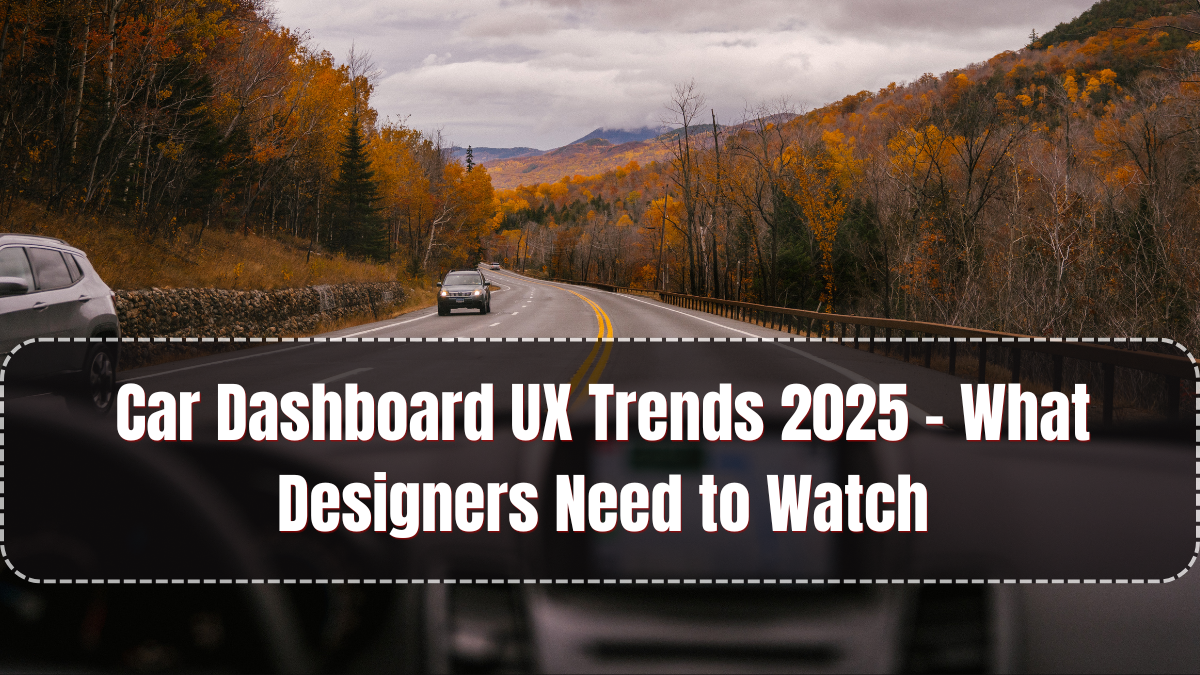In 2025, the automobile user experience (UX) is undergoing a major transformation, with the car dashboard UI at the center of innovation. With vehicles becoming smarter, safer, and more connected, automakers and designers are shifting toward minimalist, intuitive, and voice-first interfaces that reduce distraction and enhance driving comfort.
Here’s a breakdown of the top Car Dashboard UI trends in 2025 that every auto UX designer should monitor while designing next-gen vehicles.

1. Voice-First Interfaces with Multi-Lingual Support
2025 marks the rise of voice-command-centered dashboards. Automakers are integrating natural language processing (NLP) to allow drivers to control navigation, music, climate, and calls without touching the screen.
Key upgrades:
-
Multi-lingual voice assistants (supporting regional Indian languages, Arabic, French, etc.)
-
Integration with Alexa, Google Assistant, and custom AI
-
Improved contextual response and gesture-based fallback options
This trend supports both accessibility and driver safety, minimizing the need to look away from the road.
2. Minimalist Layouts with Dark Mode by Default
Dashboard clutter is being eliminated in favor of clean, dark-themed designs that reduce eye strain, especially during night driving.
Popular elements:
-
Flat icons with adaptive contrast
-
Color-coded zones for driving, media, and safety alerts
-
Minimalist fonts and visual hierarchy that follow international design systems like Material Design and Human Interface Guidelines
Dark mode is now the default, with many OEMs offering light mode as an optional setting.
3. Customizable Driver Profiles and Widgets
Automotive UX in 2025 is all about personalization. Dashboards now support driver profiles, allowing users to customize layout, themes, seat positions, and widgets.
Trends include:
-
Quick-access widgets for maps, EV battery, air quality, and news
-
Integration with cloud-based user settings for shared or rental vehicles
-
Biometric login (face or fingerprint recognition) in premium models
This makes dashboard UI not just a tool—but a personal cockpit experience.
4. Augmented Reality Heads-Up Displays (AR-HUDs)
AR-HUDs are becoming common in mid-range and premium models. These overlays project essential driving info directly onto the windshield, keeping drivers’ eyes on the road.
Key uses:
-
Real-time navigation arrows aligned with road turns
-
Speed alerts and hazard warnings in driver’s line of sight
-
Lane guidance and adaptive cruise control visuals
UX designers must now account for spatial UI placement, brightness settings, and day/night transition smoothness.
5. Integrated Infotainment with Smartphone-Like Navigation
Modern dashboards now resemble smartphones and tablets with swipeable cards, app drawers, and responsive menus.
Trends to note:
-
Vertical displays replacing wide panels
-
OTA (Over-The-Air) updates for UI improvement
-
Native apps for Spotify, Google Maps, WhatsApp (voice-based only)
-
Support for Android Auto and Apple CarPlay with wireless connectivity
This hybrid infotainment model ensures consistency with users’ mobile habits.
FAQs
What is the biggest car dashboard UX trend in 2025?
The shift toward voice-first, minimalist, and personalized interfaces is leading the UX evolution in 2025.
Are AR dashboards now available in economy cars?
Not yet. AR-HUDs are primarily found in mid to premium vehicles, but prices are dropping and mass adoption is expected soon.
Do car dashboards now support multiple languages?
Yes, many carmakers offer multi-lingual voice assistants and UI localization, especially in India, Europe, and the Gulf.
Can drivers customize their dashboard layout?
Absolutely. Driver profile customization is now a core feature, including themes, widgets, and shortcuts.
Click here to know more.
